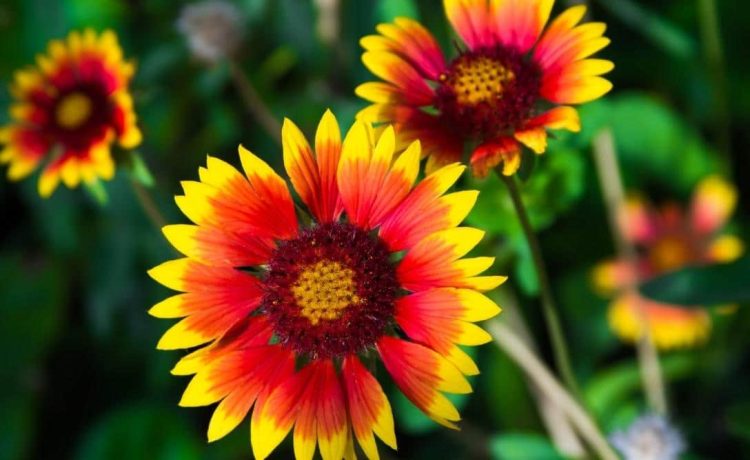juteralabs.com – The Indian Blanket Flower, scientifically known as Gaillardia pulchella, is a striking perennial that graces the landscapes of North America. With its vibrant, multi-colored petals and resilience in various growing conditions, this wildflower has earned a special place in gardens, meadows, and prairies. Let’s explore its characteristics, care, and importance in the natural world.
Appearance and Characteristics
Indian Blanket Flowers are known for their colorful, daisy-like blooms, often featuring a combination of red, orange, and yellow hues. The petals typically have a gradient from dark red at the center to bright yellow at the edges, creating a fiery appearance that’s hard to miss. These flowers usually bloom from late spring to early summer, providing a burst of color when many other plants are just beginning to flower.
The plant itself grows up to 2 feet tall and forms a bushy clump of lance-shaped leaves, which provide a pleasant contrast to the flowers. These flowers thrive in a variety of environments, from dry, rocky soils to loamy, well-drained garden beds, making them an excellent choice for low-maintenance landscaping.
Growing Conditions
Indian Blanket Flowers are native to the central United States and Mexico, where they grow in the wild, often in areas with full sun and well-draining soil. They are drought-tolerant once established and require little water, making them ideal for xeriscaping or low-water gardens.
When planting in a garden, ensure the soil has good drainage and avoid overwatering, as the plant does not fare well in overly wet conditions. While Indian Blanket Flowers are fairly tolerant of poor soil, they will perform best in slightly acidic to neutral soil, enriched with organic matter.
Attracting Pollinators
In addition to their beauty, Indian Blanket Flowers play a vital role in supporting local ecosystems. The flowers are particularly attractive to pollinators like bees, butterflies, and hummingbirds. Their bright colors and plentiful nectar make them a popular stop for these creatures during the warm months. By planting Indian Blanket Flowers in your garden, you help provide essential resources for these important insects and birds.
Caring for Indian Blanket Flowers
Indian Blanket Flowers are relatively easy to care for, but a few simple guidelines can ensure they thrive in your garden:
- Watering: Once established, the plant is drought-tolerant. Water moderately during dry spells, but avoid overwatering.
- Pruning: Deadheading spent blooms can encourage additional flowering and prevent the plant from becoming too leggy.
- Winter Care: In colder regions, Indian Blanket Flowers may die back in the winter but often reemerge the following spring from their roots. In areas with harsh winters, it may be beneficial to mulch the base of the plant to protect it from frost.
Uses and Cultural Significance
The Indian Blanket Flower is not just a beautiful addition to any garden; it has cultural significance as well. Native American tribes, such as the Navajo and Apache, have historically used parts of the plant for medicinal purposes. The vibrant blooms are also a symbol of warmth and the sun, reflecting the energy and resilience of the land.
In modern times, the flower is cherished for its ornamental value in landscaping. It’s often included in wildflower mixes, prairie gardens, and even as part of flower arrangements due to its bold, cheerful colors.
Conclusion
The Indian Blanket Flower is a stunning and practical plant for gardeners looking to add color and life to their spaces. Its vibrant petals, easy care, and attraction to pollinators make it a great choice for those who want to support biodiversity while enjoying the beauty of nature. Whether used in a garden bed or wildflower meadow, the Indian Blanket Flower is sure to brighten any landscape with its radiant colors and symbolic connection to the natural world.

